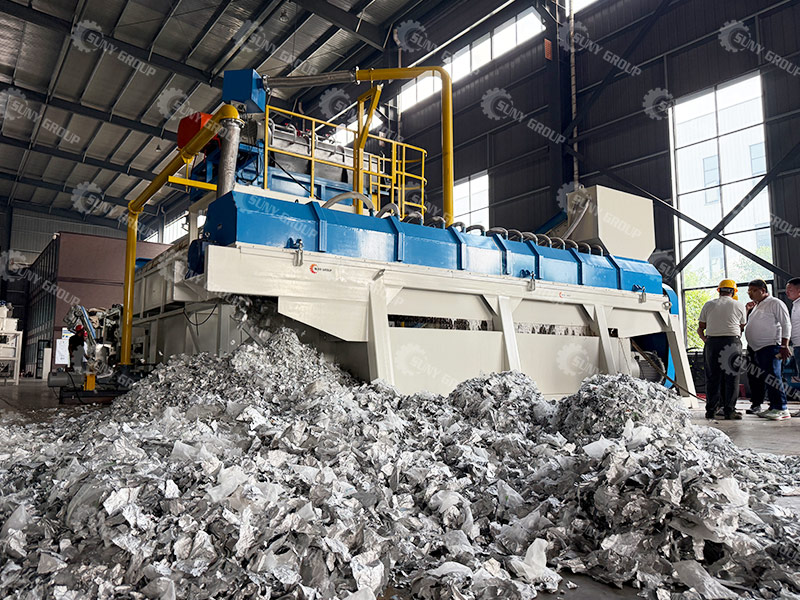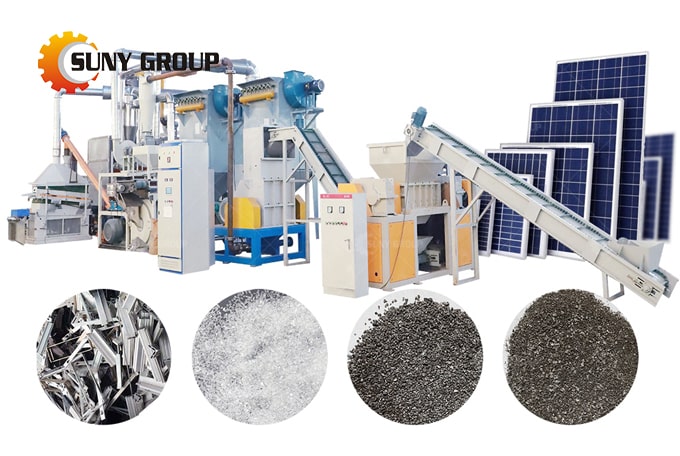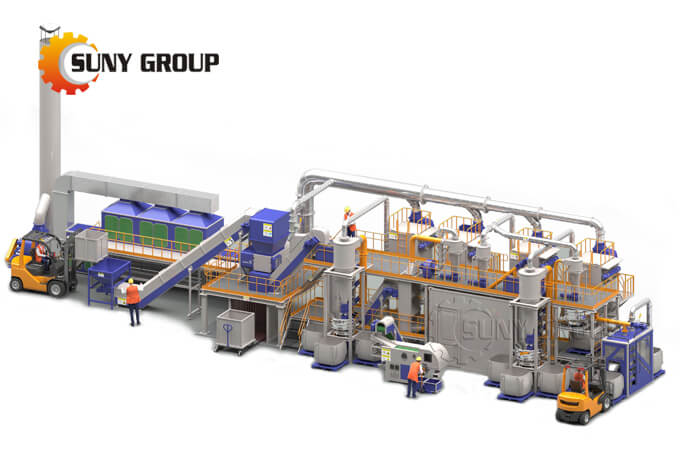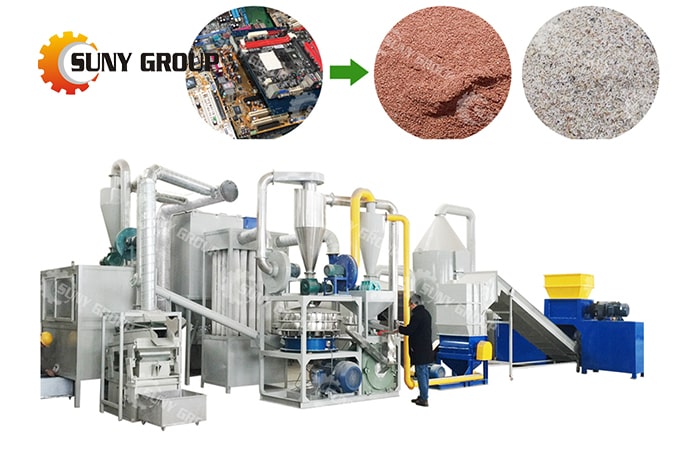Paper-plastic composite materials are very important raw materials in our daily life. Faced with the increasing amount of paper-plastic composite waste, how to separate paper and plastic has become a key issue. SUNY GROUP summarizes the commonly used methods for separating paper and plastic:

1. Thermal separation method: It mainly uses the method of changing the properties of plastic after heating to achieve paper and plastic separation
(1) Hot drum method: The separation device consists of an electrically heated chrome-plated barrel and a hollow barrel (rotating drum) with a scraper inside. The scraper is connected to the wall of the heated barrel, and the two rotate in opposite directions. The bottom of the barrel is connected to a trough. The material is added from the feed, and the plastic component in it begins to melt once it comes into contact with the hot barrel, adheres to the barrel wall, is scraped off by the scraper, and falls into the trough. This method can separate more than 90% of plastic from paper. The paper content of the separated plastic is very small and can be controlled below 1%.
(2) Hot air flow method: The separation of plastic film and paper is achieved by using the principle that plastic film shrinks when heated and reduces its specific area. The mixture of film and paper is sent to a heating zone. The heating box can be an agricultural grain dryer, which is in granular form to reduce its surface area. The mixture of film and paper is then sent to an air separator. The air flow takes away the paper in the mixture, and the thermoplastic plastic particles fall to the bottom of the separator. This method can almost separate the plastic from the paper.
2. Wet separation method: The light material obtained from the dry separation equipment is sent to a pulverizer. The pulverized paper pulp flows out from the small holes on the sorting plate, and the remaining plastic is discharged from a separation outlet. It is then sent to a dehydrator for dehydration and then to an air separator for separation.
3. Electrodynamic Separation
A mixture of paper and plastic is fed into the separator via a vibrating feeder, where it falls onto a rotating crushing drum. It is then transported to a corona zone formed between a wire electrode and the crushing drum. The paper is drawn toward the electrode, while the plastic remains attached to the drum. As the drum rotates, the plastic falls to the bottom and is collected.
With this method, humidity significantly affects the separation results. While a mixture with a humidity of 15% can separate the paper and plastic, the plastic will still be contaminated by a significant amount of paper. When the humidity rises above 50%, the plastic and paper can be separated.
Suny Group : http://www.sunyrecycle.com/,All rights reserved。










